Have you ever walked into a retail store and found it just makes sense? You intuitively find what you’re looking for and even stop to look at some creative displays on your way to checkout.
If you’ve experienced that feeling before, it’s not luck, but the result of great store design.
An effective liquor store design layout plan can take your shop from “just a place to buy liquor” to a memorable local favorite.
Here are the key elements of liquor store design and seven ideas you can implement to boost sales, improve the shopping experience, and stand out from the competition.
Liquor Store Design Layout: Key Elements
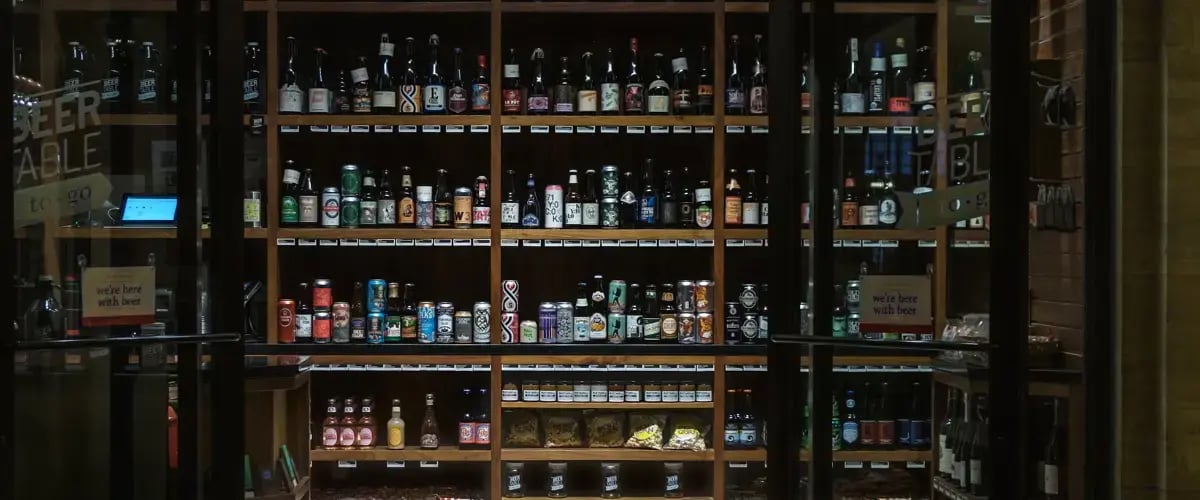
Before we highlight design ideas, here are some key elements of liquor visual merchandising and store design.
- Layout: How you arrange shelves and products in relation to one another (i.e., how customers will navigate the store).
- Lighting: How lighting (both fixtures and natural light) creates a certain atmosphere and highlights products.
- Signage: Signage encompasses wayfinding signs, shelf labels, storytelling displays, sales stickers, and any other display that conveys information.
- Colors: The colors you use in your store and marketing materials (logos, website, etc.)
- Materials: The materials you use for shelving, floors, signs, and other visual merchandising items (e.g., wooden shelves, glass displays, etc.)
Used effectively, these design elements can make your store feel more inviting, help boost the effectiveness of promotions, and create a better shopping experience.
7 Creative Liquor Store Design Layout Ideas To Boost Sales
You won't have control over some aspects of your store design. Or you’ll have limited resources to change them right away (e.g., lighting fixtures). However, you’d be surprised just how much you can do — and how much impact it will make on the customer experience and your sales.
Here are seven liquor store design layout ideas to try at your store.
1. Tailor Your Design To Your Customers
Let’s start with a simple question: What kind of customer are you trying to bring into your shop?
The types of products you stock and the demographics of your ideal customer should be reflected in your layout and design choices.
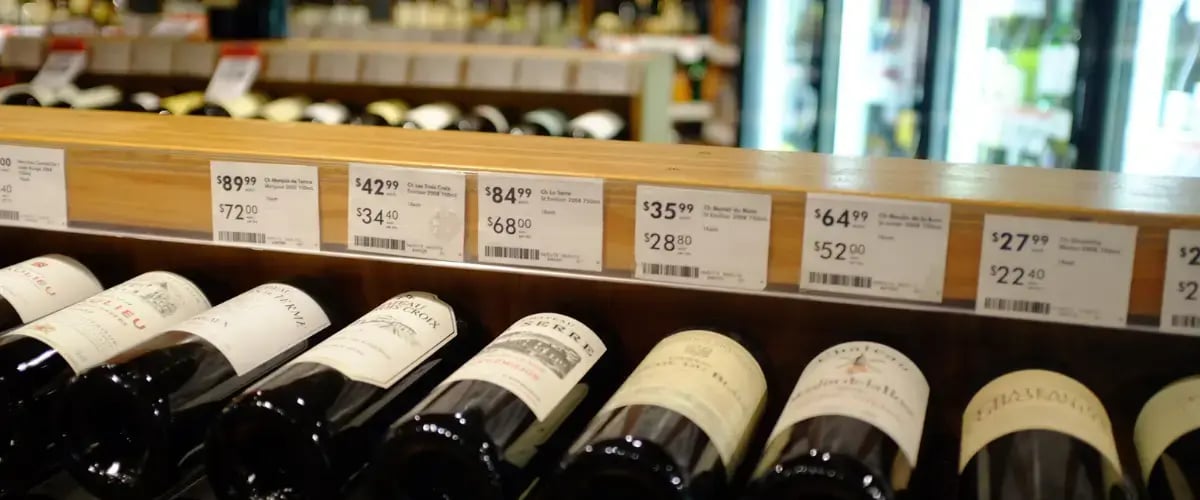
For example, if you want to be known for your whiskey selection, it’s worth investing extra time and effort into that part of the store. Find ways to highlight local distilleries and high-end bottles, and ensure your customers’ eyes are drawn to the whiskeys the moment they walk in.
If you specialize in a broad wine selection, devote more space in the store to particular regions and consider investing in wooden tilted wine racks that show off the bottles as if they were part of a private collection.
Your liquor store design layout will go a long way toward defining the atmosphere of your shop, so consider how you want customers to perceive your brand before making any significant changes.
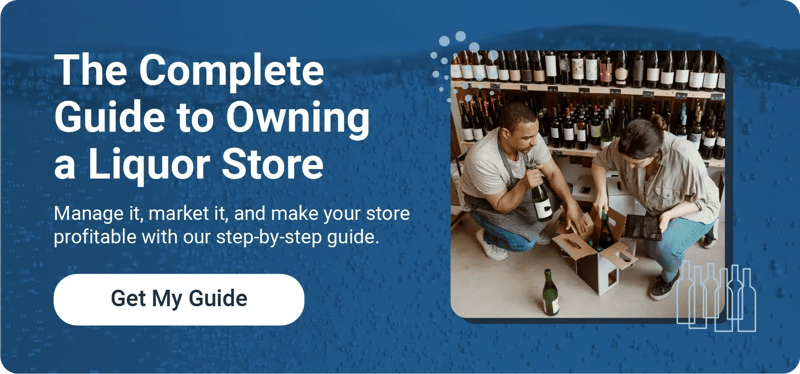
2. Spotlight High-End Bottles
While most of your sales might come from mid-range staples, some customers want to indulge with a high-end bottle — and you should create an experience that makes that purchase feel special.
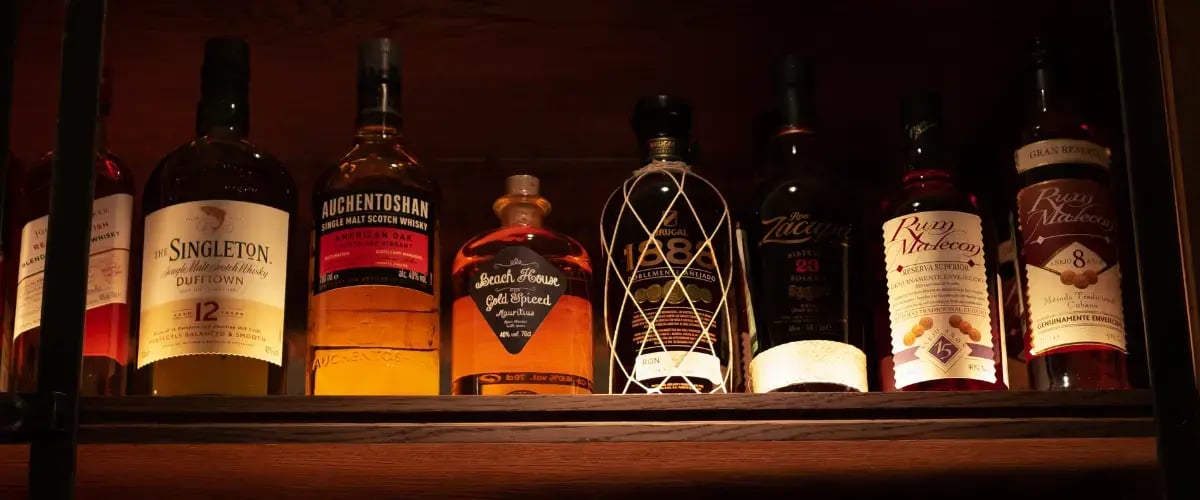
Instead of mixing the best bottles with the rest of your stock, put them on a top shelf or in a display case to make them stand out. Not only will this keep your high-end bottles safe from theft, but it’ll also give them an air of luxury that will spark conversation.
Invest in a wooden display case with accent lighting for high-end bottles. Putting your priciest bottles in a cheap-looking case may send the wrong message.
3. Use Informative Signage
Prices are going up, and as a result, people aren’t as willing to take the same risks with their money as they used to.
Combined with great customer service, informative signage can help customers feel more confident in their purchases and encourage them to venture outside their comfort zones.
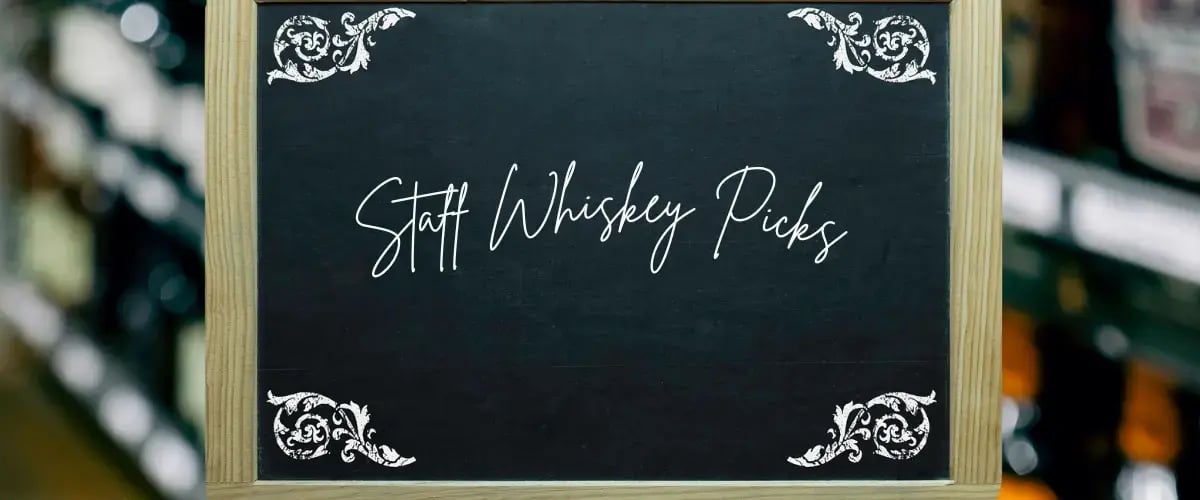
Here are some examples of effective storytelling signage you can try out today.
- Staff picks: Have a rotating selection of genuine staff favorites. Write a few sentences on why they love a particular bottle, the cocktails they might use it in, and tasting notes.
- Brand spotlights: Tell customers why a particular distillery or vineyard is unique and why they’re worth trying.
- Local highlights: Use colored labels or shelf tags to highlight which of your bottles are made locally.
- Regional differences: Educate customers on the differences between regional red wines, how American whiskey differs from Japanese whiskeys, or other regional quirks that might pique customers’ interest.
To get even more from these displays, pair informative signs with occasional discounts (e.g., “All staff picks are 15% off on Fridays”) to encourage customers to browse the store and seek them out.

4. Incorporate Barrels and Other Handcrafted Items
If you’re going to set up a promotional display you could just use a folding table and a tablecloth, but what’s the fun in that?
Using wine or whiskey-making barrels in your store gives your displays an extra air of authenticity and class. Many distilleries sell their spent barrels on a first-come, first-served basis, so try asking around.
You can also try to find old distilling equipment, vintage bar signs, and other themed equipment to make your store more memorable.
Even if you don’t have access to old equipment, experiment with paintings, signs, and other handcrafted items to give your store an extra layer of personality.
5. Level Up Endcaps With Cross-Selling and Seasonal Displays
While the humble endcap is often used to feature on-sale items or new arrivals, they have the potential to do so much more.
Endcaps are the perfect place to highlight holiday and seasonal favorites that people might otherwise not think to seek out. You can also theme endcaps to sell complementary items.
For example:
- Throw Aperol and club soda on the endcap of your sparkling wine section, along with a recipe for an Aperol Spritz.
- Put cocktail shakers and strainers at the ends of your liquor aisles.
- Place a selection of margarita mixers and limes at the end of the tequila aisle.
- Put spice packets and wine together for homemade mulled wine for the holidays.
The possibilities are only limited by your creativity — don’t be afraid to try new things! Fun endcap displays might inspire customers to come back to see what you come up with next.
6. Don’t Hide Your Non-Alcoholic Options
Many liquor stores carry a few non-alcoholic (NA) beers and wines, but store them in a hidden part of the store.
However, this misses out on a huge opportunity. One of the biggest liquor industry trends is the meteoric rise of NA beers, wines, and cocktails, especially among younger people.
Proudly display your NA options next to their alcoholic counterparts, with a dedicated section in your wine aisles for NA wines, and a spot in the beer cooler for NA beers.

7. Base Your Store Layout on Data, Not a Hunch
When you start a liquor store, you might not know how to lay your products out — and that’s OK.
However, as you learn more about your customers and their preferences, it’s important to change your layout to match their needs.
Use the reports and analytics on your liquor point of sale (POS) system to understand inventory turnover, bestsellers (both individual items and categories), seasonal trends, and more. This data will give you insights into things like:
- Shelf balance and how much space to allocate different brands
- What types of products should be put near the front of the store
- What kinds of items are frequently bought together
- Which high-end bottles should you feature in your display cases
- What types of promotions were most effective
Those insights can then be used to refine the layout of your shop, allowing customers to find their favorite items faster and ultimately creating a better shopping experience.
When making changes to the layout of your store, you should always have a goal in mind. That way you can keep track of the results.
Improve the Shopping Experience and Smash the Competition With Bottle POS
Remember, even with the best planning, you aren’t likely to nail a perfect liquor store design layout right away. Layout and design naturally evolve based on customer feedback, sales data, and seasonal changes.
However, investing time in your store layout is worth it in the long run. An optimized store layout will help:
- Reduce overhead on unpopular items
- Improve the shopping experience
- Better highlight sales
- Showcase what makes you unique
To take your store to the next level, pair a well-planned layout with the right technology.
Bottle POS was built by liquor store owners for liquor store owners, with advanced inventory management, customizable customer loyalty, pre-built inventory and sales reports, and much more.
With Bottle POS, you can gain the insights you need to get the most out of your promotions and delight your customers.
Schedule a custom demo with our liquor store experts today to learn more.